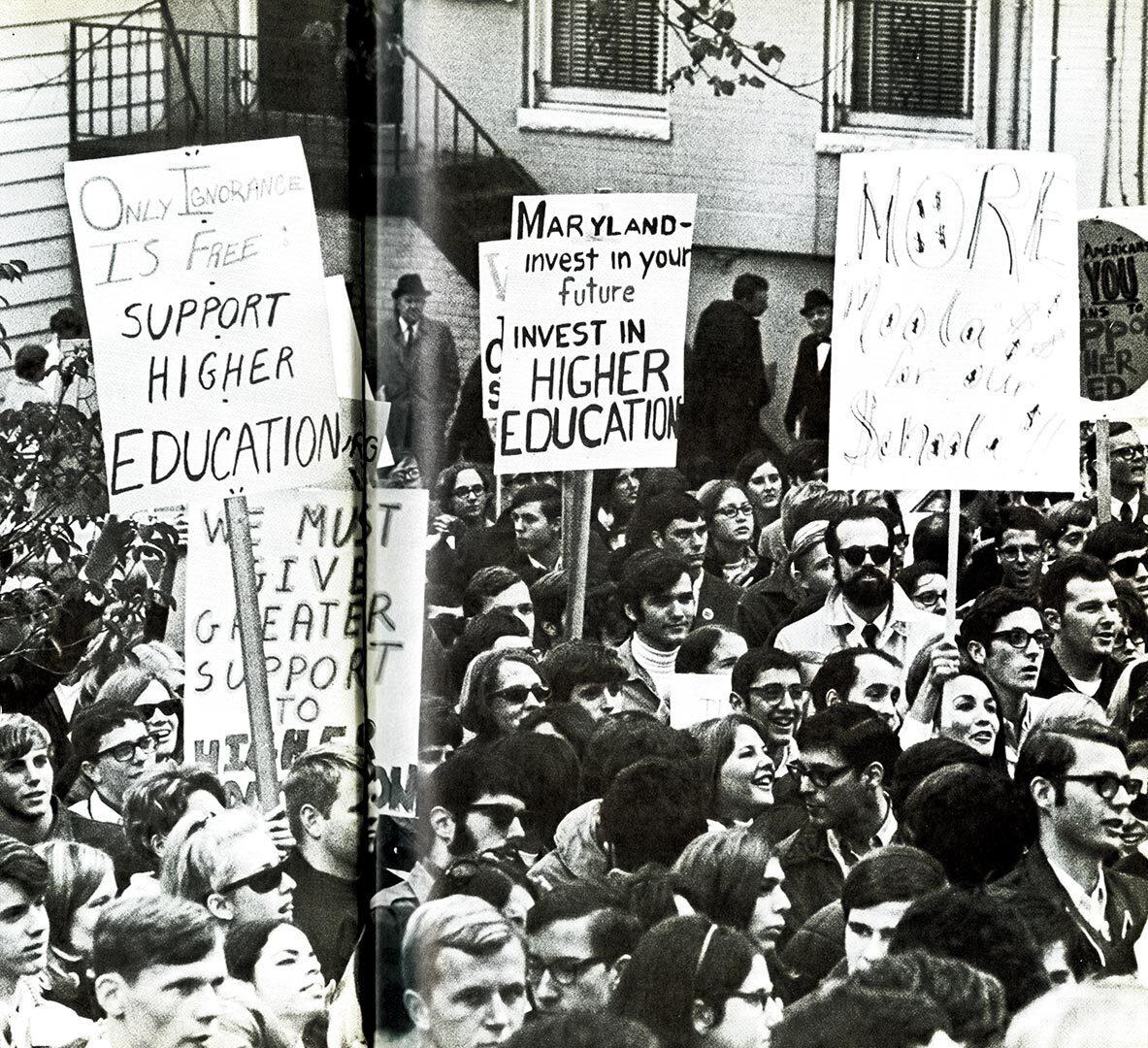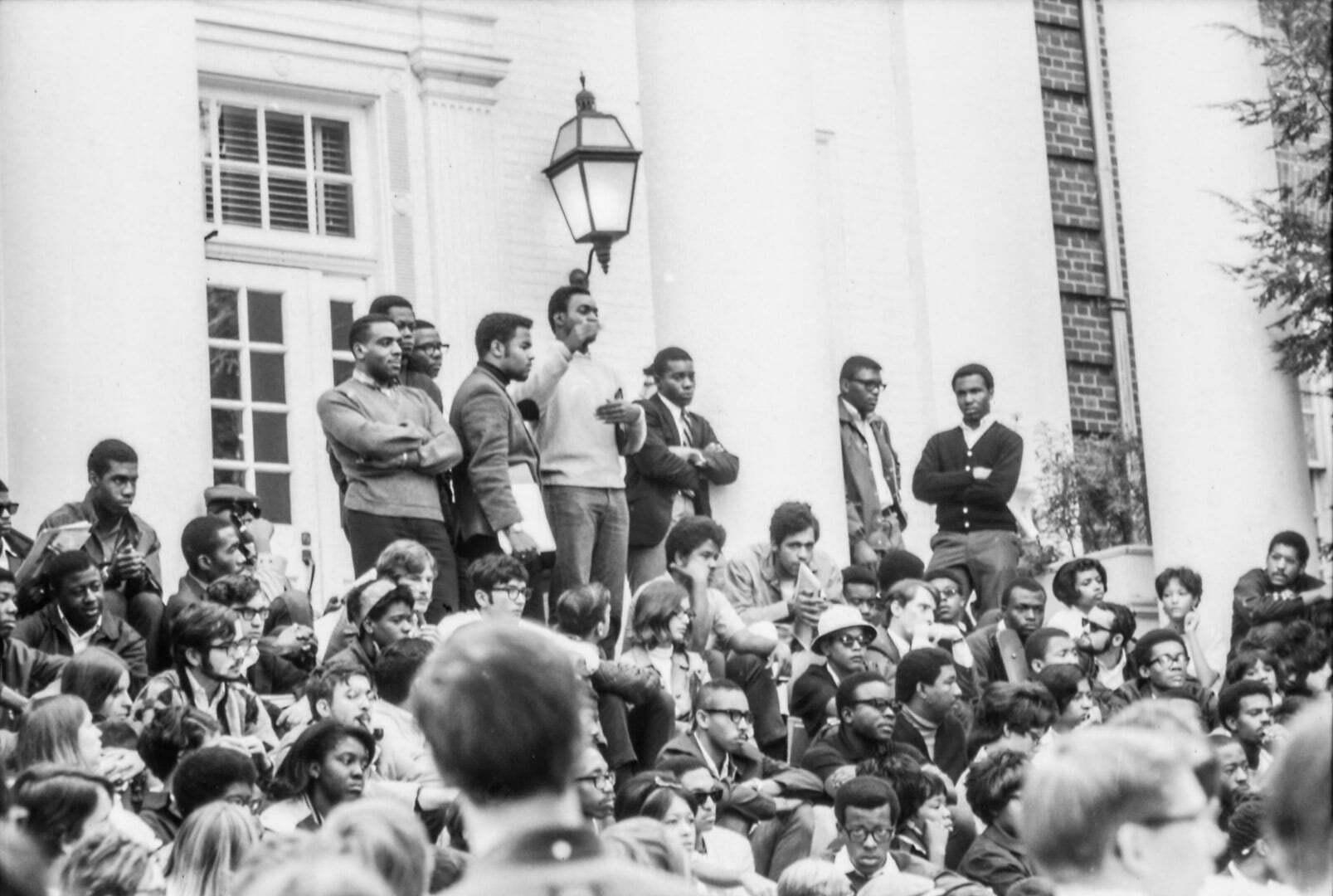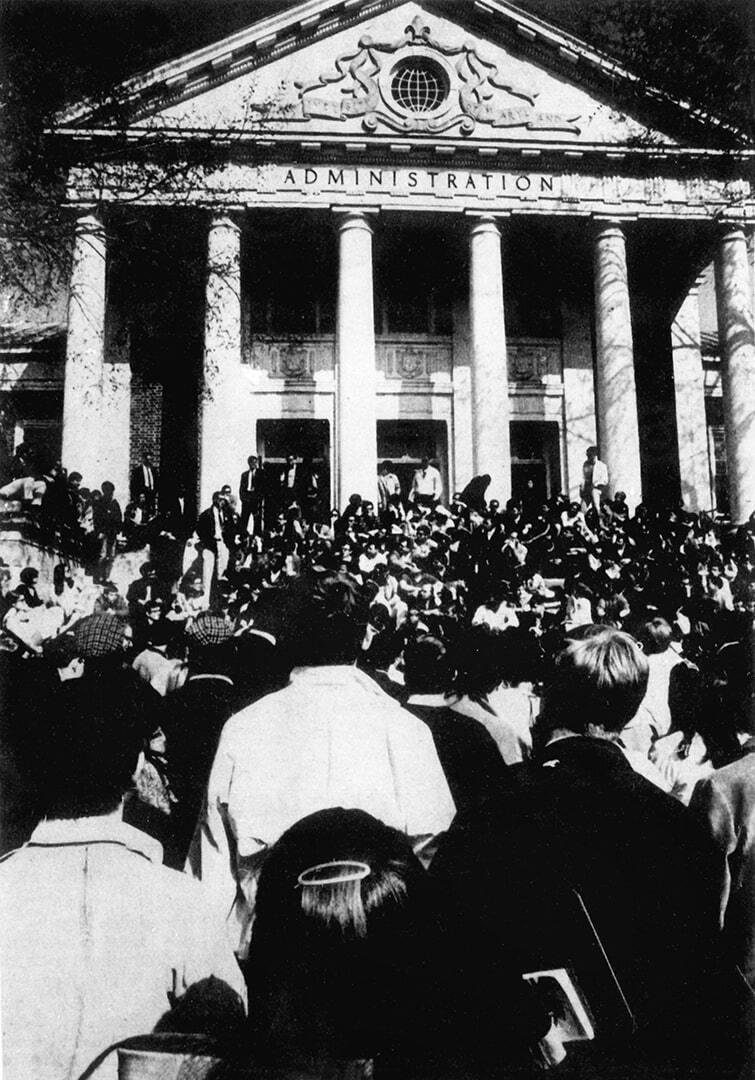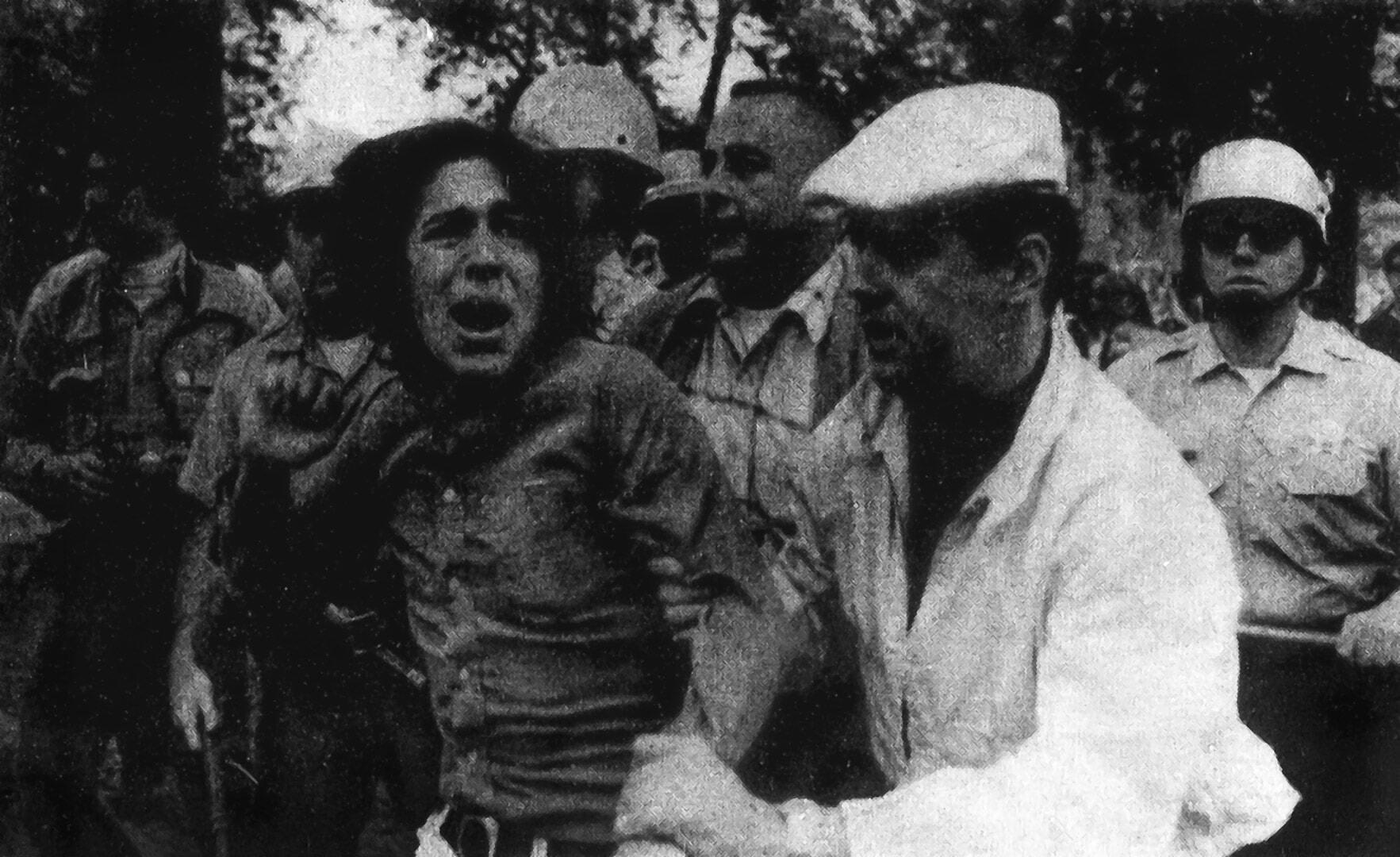- November 15, 2018
- By Liam Farrell
It was a year when the country felt like it was coming apart, with assassinations, riots and shocking political developments that pulled at America’s seams. The University of Maryland wasn’t isolated from the upheaval of 1968.
That year’s events, from the killing of the Rev. Martin Luther King Jr. to the chaos at the Democratic National Convention, were the subject of a forum yesterday hosted by University Libraries, “You Say You Want a Revolution? 1968 and its Legacies.” Experts in subjects ranging from history and African American studies to computer science and kinesiology reflected on the impact of protests at the Olympics, clashes between police and demonstrators at the Democratic National Convention, and the founding of Intel.
“The world we now have was created to a considerable degree by the events of that year,” said Eric Lindquist, UMD’s history, American studies, classics and religion librarian.
And while protests at UMD reached a fever pitch (and brought in the National Guard) in the following decade, 1968 saw a “continuing drumbeat of student unrest,” said Anne Turkos, university archivist emerita.
For example, about 700 students marched to the main administration building on April 5, with some entering the lobby, demanding classes be canceled to honor King. (They were.) In the fall, protests erupted after four African-American female students were rejected from a home economics nutrition experiment because, according to an associate professor, they were “biologically different.” Hundreds of students protested on the steps of Marie Mount Hall, then the home economics building.
UMD students also descended on Annapolis with peers from around the state in October 1968 to rally for greater higher education funding. Gov. Spiro Agnew was hung in effigy outside Ritchie Coliseum, just a week after the Student Government Association cabinet and legislature canceled plans to burn Agnew in effigy as well.
So while 1968 is widely considered a global movement, with upheaval everywhere from Paris and Rome to South Africa and Mexico, historians look at it with “double vision,” said Katarina Keane, a lecturer in the Department of History.
“1968 was a grand narrative,” she said, “but it was also a local story.”





Topics
Campus & CommunityTags
HistoryUnits
University Libraries